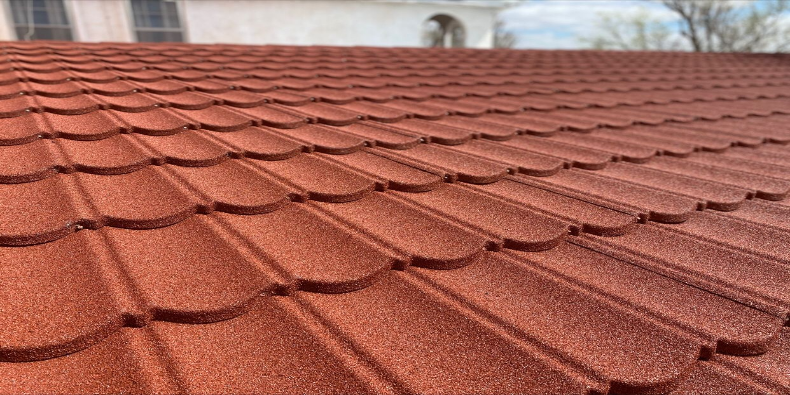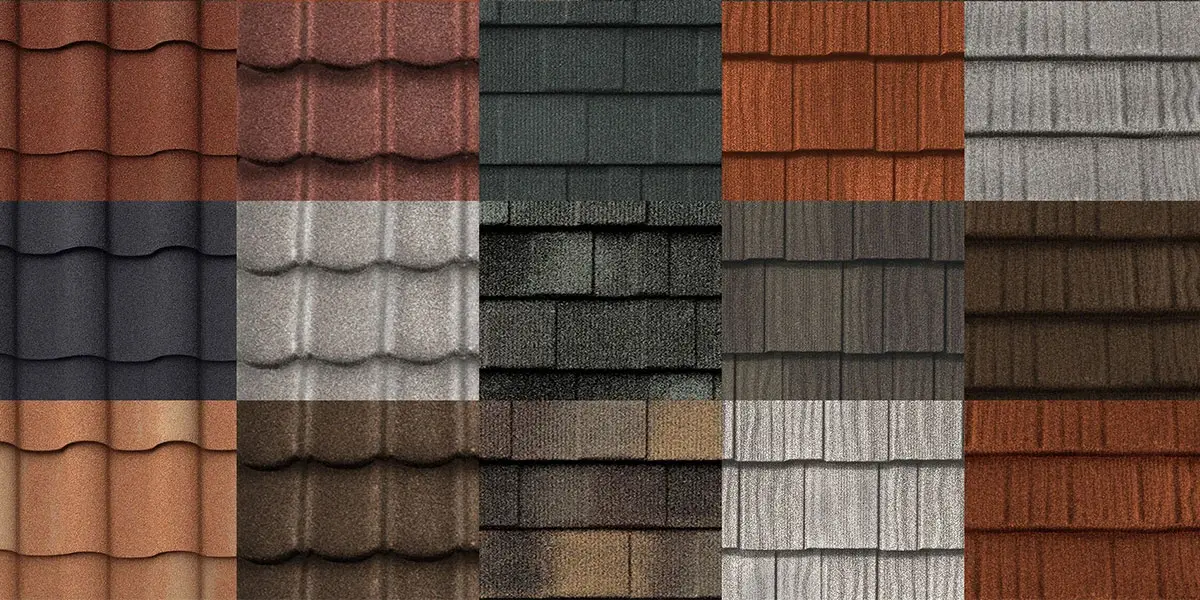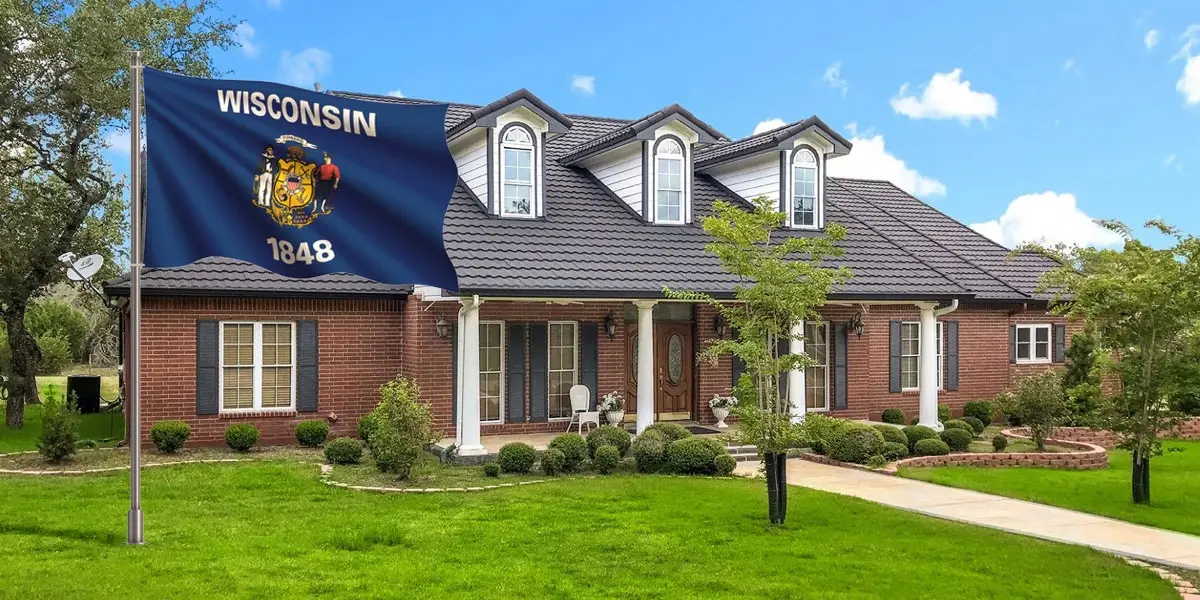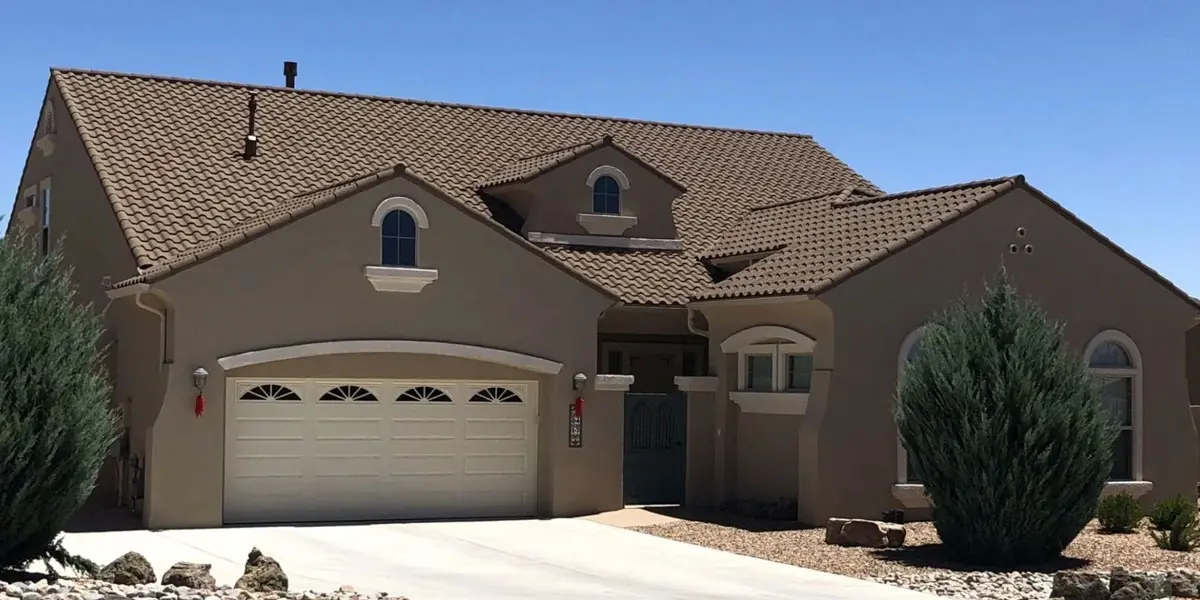Demand for residential metal roofing is at an all-time high, with marketing share growing by 50% between 2019 - 2022.
If you’re looking to grow your roofing business, now is the time to add metal roofing to your service offerings. In fact, homeowner demand for metal roofing exceeds the number of qualified metal roofing installers in many areas.
“Consumers are simply tired of having to replace their roofs after just a few years. We’re finding more homeowners are turning to quality metal roofs, not just for better, long-lasting performance, but also for metal’s more sustainable and low maintenance attributes.” –Renee Ramey, executive director of the Metal Roofing Alliance (MRA)
Capitalize on this unprecedented homeowner demand for metal roofing with the strength and style that only stone-coated metal roofing can provide.
Start by checking out our new series of step-by-step video installation guides for all DECRA Metal Roofing products.
These video guides were designed to help roofing contractors of all experience levels install DECRA as effectively as possible; so even if you’re a seasoned DECRA installer, you’ll benefit from the tips and techniques shared in these videos. Be sure to check out the installation FAQs for even more tips and techniques.
- How to Install DECRA Villa Tile
- How to Install DECRA Shingle XD and DECRA Shake XD
- How to Install DECRA Tile and DECRA Shake
- DECRA Metal Roofing Installation FAQs
How to Install DECRA Villa Tile
The semi-cylindrical barrel shape of DECRA Villa Tile perfectly mimics the traditional Spanish and Roman barrel styles to accommodate the classic curves of Italian Villas, Spanish Colonial themes and Mission Revival architecture.
Unlike traditional clay tile roofing, which is typically installed on battens, DECRA Villa Tile is installed directly onto the roof deck and offers superior performance and durability without compromising on style.
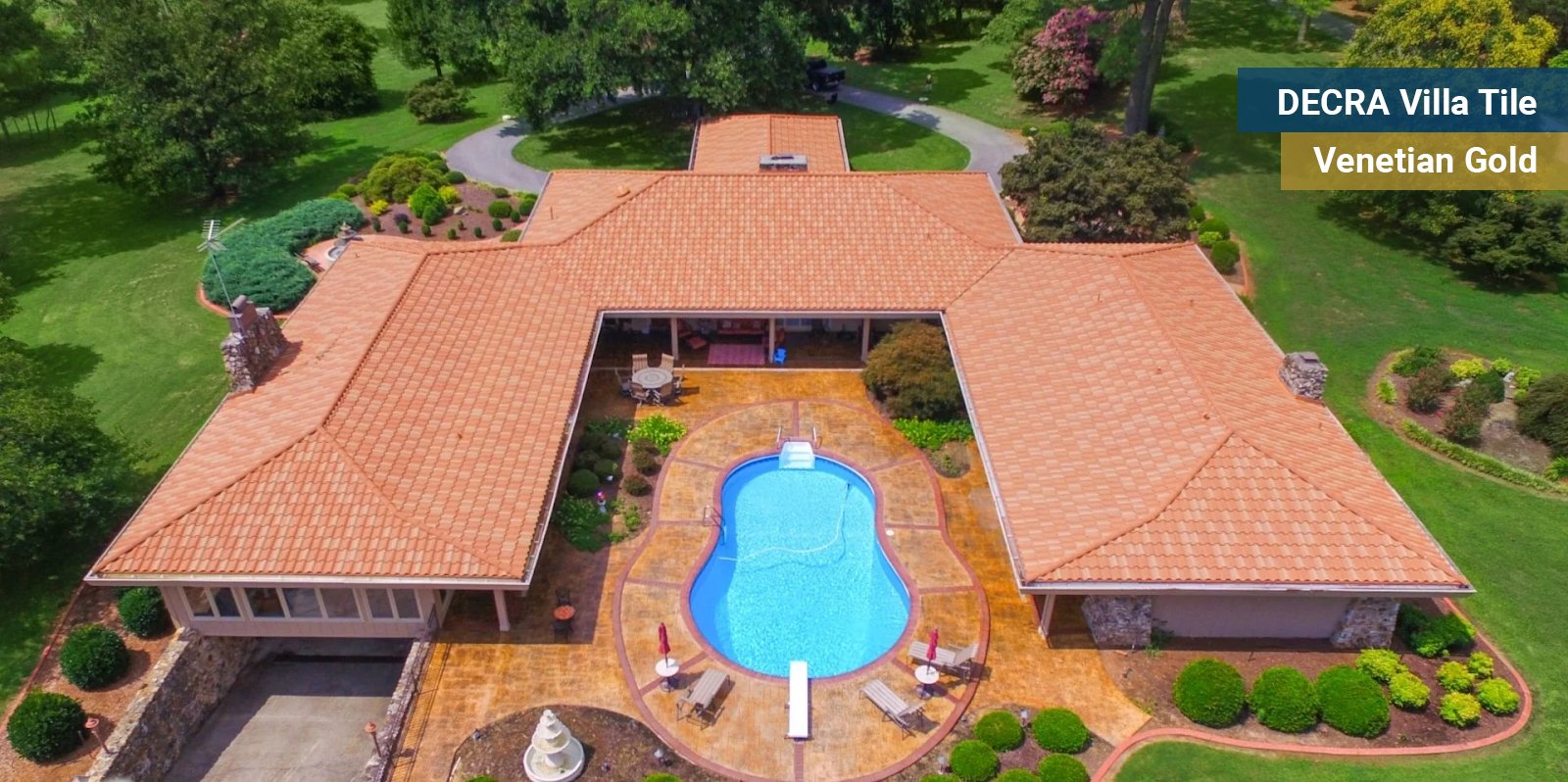
Here’s how to install DECRA Villa Tile:
How to Install DECRA Shingle XD and DECRA Shake XD
DECRA Shingle XD and DECRA Shake XD are installed direct-to-deck, and both provide the longevity, durability, and aesthetic appeal of stone-coated metal roofing. However, while the installation methods of DECRA Shingle XD and DECRA Shake XD are similar, they differ in appearance.
DECRA Shingle XD replicates the aesthetics and dimensionality of asphalt shingle roofing, while DECRA Shake XD provides the rustic aesthetics of hand-split wood shake roofing.
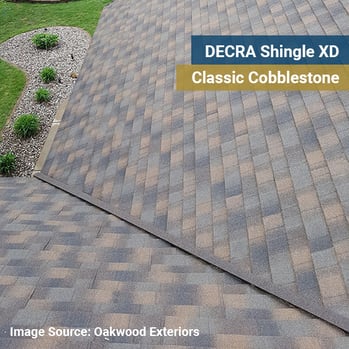
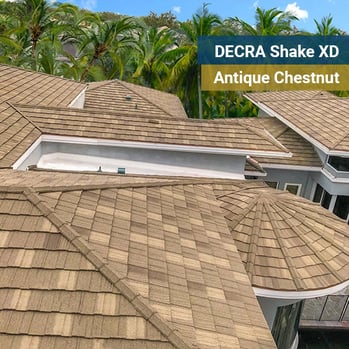
Here’s how to install DECRA Shingle XD and DECRA Shake XD:
How to Install DECRA Tile and DECRA Shake
DECRA’s line of metal tile roofing and metal shake roofing products can be installed either direct-to-deck or on battens.
For example, DECRA Villa Tile and DECRA Shake XD are installed direct-to-deck and DECRA Tile and DECRA Shake are installed on battens. DECRA Tile captures the look of Mediterranean-scalloped clay tile while DECRA Shake provides the rich look of cedar wood shakes.
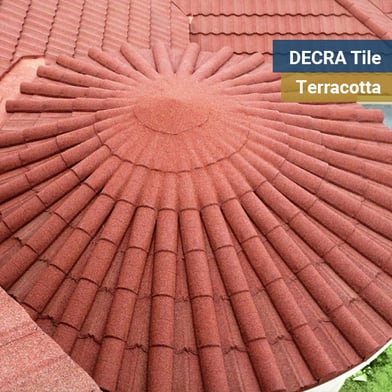
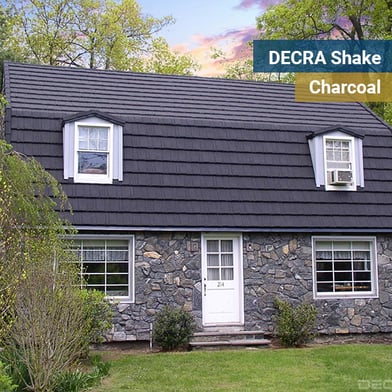
Here’s how to install DECRA Tile and DECRA Shake:
DECRA Metal Roofing Installation FAQs
Have questions about installing DECRA Metal Roofing? Here are the most frequently asked questions we receive from roofing professionals when it comes to installing DECRA.
How do I install around a pipe flashing or box vent?
Flashing and roof penetrations add time, labor, and materials to the cost of installation, so this is an important consideration for any job. Here’s what you need to know.
- First, install full courses of panels below the pipe penetration. You’ll want to measure and cut a hole in the center of the underpan to fit over the pipe penetration and lock onto the course of the shingles below. This provides a flat, smooth surface to mount the pipe flashing.
- Seal underneath the two sides and the top, and fasten in the upper corners.
- Measure up from the bottom of the underpan to the front and top of the ‘neck’ on the pipe flashing.
- Next, measure over from the panel on the left to the left and right sides of the pipe flashing. Make sure to account for the proper overlap.
- Transfer the measurements to a panel and cut out a hole that will fit around the ‘neck’ of the pipe flashing.
- Make a 2” relief notch in the bottom clip lock at the center of the pipe position. Only remove the backside and leave the stone-coated face intact.
- Slide the prepped panel over the pipe and engage to the panels below and to the left.
- Seal the opening between the cut panel and the pipe flashing.
- Use stones from the touch-up kit to cover the sealant.



How do I install around skylights?
- Install panels up to the front of the skylight.
- Install the front apron/sill from the skylight flashing kit (form shape to panel profile).
- Install side channels (or Universal Channel) along the sides of the skylight.
- Weave panels back on top of the front apron and side channels, up to the top side of the skylight.
- Install the back saddle from the skylight flashing kit.
- Fill in the upper corners and backside with panels (use full panel across the saddle for more rigidity).

How much can I charge in labor and materials for a DECRA metal roof?
Just like most building products, the standard baseline of 2 to 2.5 times the material costs for the total roof area is a good starting point for your estimate.
Many factors can impact the standard baseline rate, so you’ll want to consider the following when determining what to charge:
- Roof Complexity: Complex roofs require more time, labor, accessories, flashings and fasteners.
- Logistics: Factor in the cost of getting materials and your installers to the job site.
- Existing Roof Condition: Will a tear-off be required? DECRA roofs are among the lightest materials available, so a complete tear-off may not be required.
- Batten or Direct-to-Deck Installations: DECRA has roofing products available for either installation option which can impact the cost. For example, battens on an irregular existing roof surface can simplify roof-overs.
>>>Related Resource: View all DECRA estimating sheets in the Knowledge Base.
How many squares can a single DECRA installer lay in a day?
This can vary greatly depending on the complexity of the roof.
For a roof on a straight, walkable run (such as on a single story with minimal roof penetrations or attachments), it’s possible to install up to 20 squares per day.
Steep slope roofs can be much more complex. For example, a roofing contractor working on a two-story home with skylights, valleys, sidewalls, cupolas or gables may only be able to install three to four squares per day (this is true for even the most experienced installers).
How do I calculate materials and determine a waste factor?
Calculating a DECRA Metal Roofing material list is fast and easy. First, you’ll need to gather the measurements below:
- Actual square footage of the roof (see waste factor calculations below).
- Total lineal feet of
- Eave.
- Rake/gable.
- Sidewall (including chimneys, formers and skylights).
- Headwall (including chimneys, formers and skylights).
- Valley.
- Hip.
- Ridge.
- Pitch change (if any).
- Total number of end discs needed for hip and ridge caps (note that the bottoms of hips, rakes and the ends of ridges are not necessary with all DECRA profiles).
- Total number of pipe flashings and/or roof penetrations.
- For ventilation options (ridge vent or panel vents), use our ventilation calculator.
Once you have the measurements, you can use either the DECRA estimating sheets or Eagleview to compile your list. DECRA estimating sheets can be found on the DECRA Knowledge Base here.
You can also get accurate material lists for all DECRA profiles at DECRA | EagleView US. 3D roof measurement reports are available to contractors at preferred prices.
To calculate the waste factor, please use the formulas below.
For DECRA Villa Tile, DECRA Tile, DECRA Shingle XD, DECRA Shake XD and DECRA Shake:
Total LF (linear footage) of all rake/gable, ridge, headwall and sidewall x .5 sq ft
Total LF ‘difference’ in hips and valleys x 2 sq. ft.
Example:
(80’ rake/gable + 50’ ridge + 30’ headwall + 40’ sidewall) x .5 sq. ft, = 100 sq. ft,
(60’ hip – 15’ valley) x 2 sq. ft. = 90 sq. ft.
Total Waste = 190 sq. ft./100 = 1.90 squares
Can I install roof jacks on the roof?
Yes. While the surface of a DECRA roof is extremely durable and walkable, there are times when a roof jack is required.
For DECRA Shingle XD and DECRA Shake XD:
- Snip away approximately 4” of top clip lock where the roof bracket is to be installed.
- Install the roof bracket and fasten it securely above the panel.
- Install slip sheet under roof bracket to prevent rubbing panel surface. You may wish to coat roof brackets to provide a protective layer (truck bed liner spray, for example).
- Install additional roof brackets and planks/toe boards.
- Continue installing panels as normal. When finished, tap and remove the roof brackets.
For DECRA Villa Tile:
- Install 1x4 blocks on and above the panel where your roof bracket is to be installed.
- Install the roof bracket on top of the blocking and fasten it securely above the panel.
- Install a panel over the roof bracket. Snip and fold the nose of the panel up to allow the roof bracket to protrude.
When the roof bracket is removed, simply seal the mounting area, fold the nose back down, and install a stitch screw to hold it securely in place, if needed.

What do I do if I have an installation question on a job or during the bidding process?
Most questions can be answered on the DECRA Knowledge Base, an online library of resources, such as:
- Estimating Sheets
- Installation Guides
- Marketing Materials
- Specifications and Drawings
- Code Compliance and Testing Information
- Product and Technical Information
- Marketing Materials
We also have a team of dedicated sales managers and an expert installation trainer with nearly 20 years of experience to assist with anything you need.
Have more questions about installing DECRA Metal Roofing? Contact us today, we take pride in providing top-tier customer service and are happy to answer any questions you may have.
Editor's Note: This blog was originally published in April 2022, but has been updated with relevant information.

